One of the most thrilling things about growing and designing seasonal flowers is how they can connect us, even when we’re continents apart. I’ve always said that flower people are some of the nicest people you’ll ever meet, and today’s interview further confirms this. Becky Crowley is someone I’ve admired from afar for a long time, and I’m so happy to be introducing her to you today if you don’t already know her or follower her online.
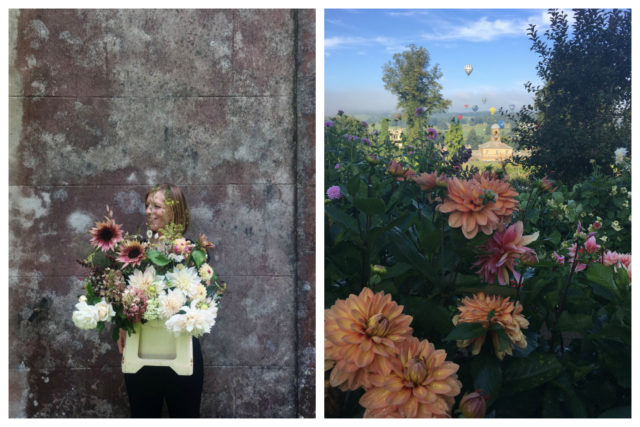 Living and gardening in the East Midlands region of England, Becky Crowley grows flowers for the cutting garden at Chatsworth House, the estate of the Duke and Duchess of Devonshire which is in Derbyshire in the North of England. In addition to running the cutting garden, she also has an Etsy shop filled with beautiful botanical prints and cards. I recently ordered a bunch, and they are even lovelier in person.
Living and gardening in the East Midlands region of England, Becky Crowley grows flowers for the cutting garden at Chatsworth House, the estate of the Duke and Duchess of Devonshire which is in Derbyshire in the North of England. In addition to running the cutting garden, she also has an Etsy shop filled with beautiful botanical prints and cards. I recently ordered a bunch, and they are even lovelier in person.
As she shares with us, you’ll learn about how she landed this incredible job and how her past experiences prepared her for where she is today. You’ll also learn about the important charity work Becky supports as a volunteer and through sales of her prints. I hope you enjoy the conversation as much as I did.
Erin: Becky, I am so delighted to have the opportunity to connect with you today. For those that don’t know you already, please share a bit about yourself and your role at Chatsworth House.
Becky: Hello Erin, it’s a real pleasure. Thanks so much for asking me to contribute to your blog, as it’s been a valuable resource for me over the years.
For those who don’t know about Chatsworth, it is a mind-bogglingly grand stately home often referred to as the ‘Palace of the Peaks’ due to its location within the Peak District National Park. There’s been a house here since the 1550’s when Bess of Hardwick and her husband William Cavendish made it their home. It is the Cavendish line that continues today with the 12th Duke and Duchess of Devonshire who live at Chatsworth now and for whom I grow cut flowers. Things have changed a great deal over the years though with the property, including the gardens, now being owned by a charitable trust and open to the public for nine months of the year.
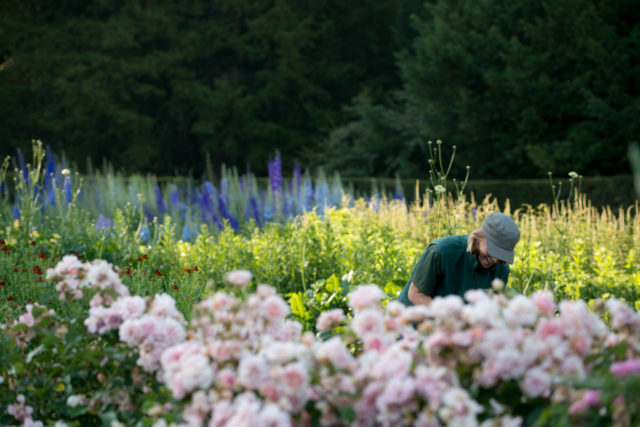
Photo by Simon Watkinson
So it’s my role to try to make a beautiful cut flower garden for visitors to enjoy whilst ensuring that we produce the quantities of flowers required to decorate the private rooms of the Duke and Duchess and for all the big events that are held in the house. We also provide the Chatsworth farm shop with flowers and a growing number of weddings too. Luckily I work with a team of three excellent florists, so for the most part I am able to concentrate on the growing and gardening.
The cutting garden is a one acre site, but it is set within a three acre kitchen garden where my colleagues Stefan Homerski and Glenn Facer grow an amazing range of fruit, vegetables and herbs. We have four beautiful Victorian glasshouses at our disposal too, two of which I use for cut flowers, starting with anemones and ranunculus in March and ending with a selection of chrysanthemums in November and December.
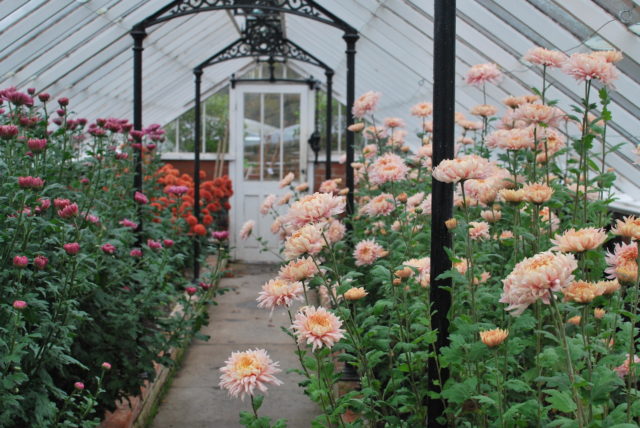 Erin: I’m amazed at the diversity of plants that you tend at Chatsworth gardens. How do you stay organized and plan your work? Can you describe what a typical day is like for you?
Erin: I’m amazed at the diversity of plants that you tend at Chatsworth gardens. How do you stay organized and plan your work? Can you describe what a typical day is like for you?
Becky: What has become clear over the years is that I’m most organised when I have a good balance between work in the garden, work in the glasshouses & planning. I haven’t always managed to get this right; if I get too caught up with jobs in the garden, I might miss important glasshouse work such as a sowing that I’ll regret later, or the chance to deal with aphids before they get out of hand! Likewise, if I spend too much time in the glasshouses, my absence from the garden soon shows, and one winter I planned the year ahead to the very last detail but didn’t leave enough time to complete the crucial work on the ground before the season started, which put me & my meticulous plans very much on the back foot.
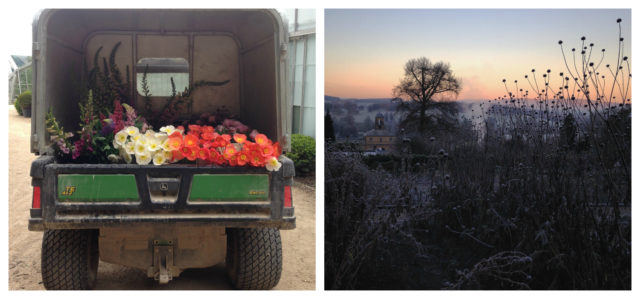 So a typical day or week varies with the seasons, but will generally involve a combination of hands-on work in the garden and the glasshouses combined with planning for what’s ahead. Today for example, after checking and watering all the glasshouse plants, I set this year’s sweet pea seeds out to pre-germinate, then cleaned & divided dahlias, potting some of them up ready to take cuttings from. Tomorrow will be different, as I’ll work with one of our students and a volunteer to barrow tonnes of mulch onto the beds, cut back perennials and dig out plants that are not earning their keep. As we’re clearing and mulching the beds I’ll be concocting plans in my mind (& in my notebook) about what I’d like to grow in the coming year, considering previous successes and failures and working out what I can improve. Later in the week I’ll pull together my seed & plant lists & plan what to grow in the space we have available, working out quantities & drawing up a seed sowing time-line for the coming months.
So a typical day or week varies with the seasons, but will generally involve a combination of hands-on work in the garden and the glasshouses combined with planning for what’s ahead. Today for example, after checking and watering all the glasshouse plants, I set this year’s sweet pea seeds out to pre-germinate, then cleaned & divided dahlias, potting some of them up ready to take cuttings from. Tomorrow will be different, as I’ll work with one of our students and a volunteer to barrow tonnes of mulch onto the beds, cut back perennials and dig out plants that are not earning their keep. As we’re clearing and mulching the beds I’ll be concocting plans in my mind (& in my notebook) about what I’d like to grow in the coming year, considering previous successes and failures and working out what I can improve. Later in the week I’ll pull together my seed & plant lists & plan what to grow in the space we have available, working out quantities & drawing up a seed sowing time-line for the coming months.
Erin: It’s incredible to look back on life and see how past experiences have prepared us for where we are now. What previous experiences have prepared you for the incredible things you’re currently doing?
Becky: This is such an interesting question. I didn’t even know this job existed when I was younger, yet when I look back at many of my previous experiences, they seem entirely relevant to what I do today.
Art & creativity were central to my life when I was growing up, and as a young adult I studied fine art at University. I certainly wasn’t a gardener at that point, but I’d spend days on end drawing flowers, studying them as they changed over time. After university I became a florist (entirely by chance) and then went on to train and work for several years as a garden designer. I also had a short, but very interesting, time as a horticultural researcher for the BBC, working on television output for the RHS flower shows. Although I loved each of these jobs, I couldn’t shake the feeling that I wanted to spend more of my days outdoors.
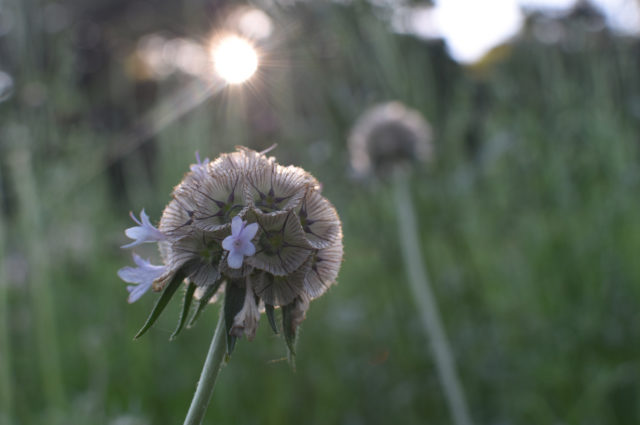 On a visit to Chatsworth years earlier, when I was around 19, I’d seen a female gardener and instinctively thought ‘I’d like to do that’, despite the fact that I was then fully engrossed in my art studies. Later, as my career path turned more towards horticulture than art, that thought kept returning to me, until I eventually did something about it and signed up to a horticultural bursary scheme here at Chatsworth in 2012, which is now called the Historic and Botanic Garden Trainee Programme.
On a visit to Chatsworth years earlier, when I was around 19, I’d seen a female gardener and instinctively thought ‘I’d like to do that’, despite the fact that I was then fully engrossed in my art studies. Later, as my career path turned more towards horticulture than art, that thought kept returning to me, until I eventually did something about it and signed up to a horticultural bursary scheme here at Chatsworth in 2012, which is now called the Historic and Botanic Garden Trainee Programme.
Once I’d completed the scheme I spent a year working part-time as a florist for the Duke and Duchess, covering the maternity leave of my colleague Sally Burchby. Serendipity then played its part when the cutting garden position became available. By this point I’d already become an avid reader of your Floret blog posts and was following many of the farmers and growers who were establishing an exciting new movement in British flower growing.
Erin: What are a few of your favorite flowers each season? Is there anything new you’re excited to grow for the first time in 2019?
Becky: Where to start! Well, the first flowers of the year have the added bonus of signifying the end of winter, so they’re always extra special. For us, these are the anemones and ranunculus that flower in March and April. We’ve been able to grow some particularly special varieties thanks to a ‘bulk buy’ co-ordinated by the excellent Flowers from the Farm network here in the UK. We grow them in the glasshouses so they provide a sneak-preview of the season ahead, but outside in the garden it’s the tulips that declare the true arrival of spring. In my first season here I grew a huge range of different tulip varieties with the idea that the Duke and Duchess, the florists and I would critically analyze them, coming up with a finely-honed palette of the very best. It was a hopeless effort really with so many remarkable varieties available now, so I continue to get carried away each year & grow as many as we can manage. I’m a big fan of Fritillaries in the spring too; both the big bold imperialis varieties as well as the smaller delicate species such as michailovskyi & assyriaca. And then there’s the plum, cherry & apple blossoms too; so much beauty.
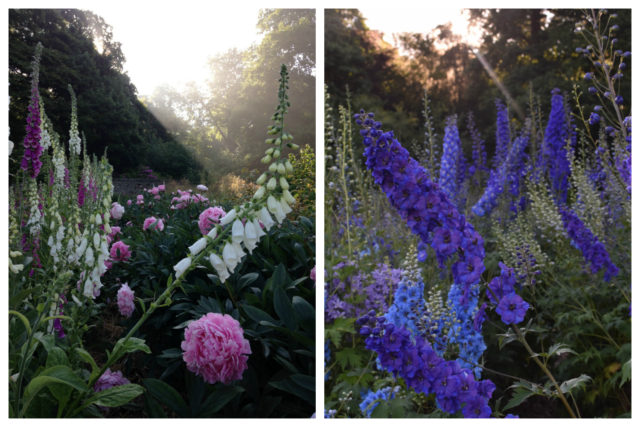 The peonies signify the move from spring into summer for us; they’re one of those short-lived but spectacular seasonal events that bring a lot of joy to the garden in June. I guess they could be considered as one of the perennial show-stoppers that we have in the cutting garden along with the lupines, delphiniums and bearded iris, but it is often the more delicate or textural components that add something special to a bouquet or arrangement, such as honeysuckle, the young fruits of raspberry canes, the smaller heads of annuals such as nigella and scabious (Scabiosa, pincushion flower), along with seed-heads when they’re still in the green & the scented stems of herbs such as mint, oregano and fennel. With this in mind I’m planning to add vines, hops, jasmine & more herbs to the garden this year, although I’m eyeing-up a few fancy bearded iris too!
The peonies signify the move from spring into summer for us; they’re one of those short-lived but spectacular seasonal events that bring a lot of joy to the garden in June. I guess they could be considered as one of the perennial show-stoppers that we have in the cutting garden along with the lupines, delphiniums and bearded iris, but it is often the more delicate or textural components that add something special to a bouquet or arrangement, such as honeysuckle, the young fruits of raspberry canes, the smaller heads of annuals such as nigella and scabious (Scabiosa, pincushion flower), along with seed-heads when they’re still in the green & the scented stems of herbs such as mint, oregano and fennel. With this in mind I’m planning to add vines, hops, jasmine & more herbs to the garden this year, although I’m eyeing-up a few fancy bearded iris too!
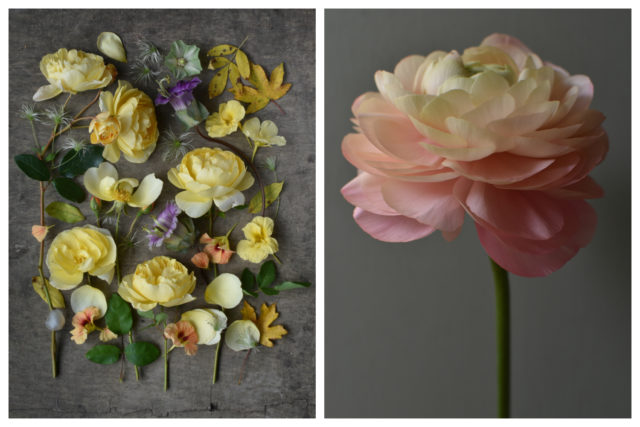 Like many other flower growers, I’ve become a dahlia addict in recent years and have grown particularly fond of the elegant forms of waterlily and collerette types, of which I’ll be adding more to the garden soon. May will see me enlisting our students and volunteers to help get the dahlias planted, watered and staked, but our efforts should be re-paid with their continual supply of blooms from summer through to autumn. As the days grow colder our glasshouse chrysanthemums provide the final cutting crop in the glasshouse. With chrysanthemums I find that it’s better to opt for quality over quantity as the dis-budding needed to achieve the big blooms is a time consuming process. ‘Tarantula’, ’Spider Bronze’, ’Avignon Pink’ & ’Bigoudi’ have got me hooked on chrysanthemums & I like to trial a few new ones each year. The China asters that you’ve trialed in recent years have a similar resemblance to some of these chrysanthemums, so I can’t wait to grow them for the first time this summer, especially ‘Moonstone’ and ‘Valkyrie Chamois’.
Like many other flower growers, I’ve become a dahlia addict in recent years and have grown particularly fond of the elegant forms of waterlily and collerette types, of which I’ll be adding more to the garden soon. May will see me enlisting our students and volunteers to help get the dahlias planted, watered and staked, but our efforts should be re-paid with their continual supply of blooms from summer through to autumn. As the days grow colder our glasshouse chrysanthemums provide the final cutting crop in the glasshouse. With chrysanthemums I find that it’s better to opt for quality over quantity as the dis-budding needed to achieve the big blooms is a time consuming process. ‘Tarantula’, ’Spider Bronze’, ’Avignon Pink’ & ’Bigoudi’ have got me hooked on chrysanthemums & I like to trial a few new ones each year. The China asters that you’ve trialed in recent years have a similar resemblance to some of these chrysanthemums, so I can’t wait to grow them for the first time this summer, especially ‘Moonstone’ and ‘Valkyrie Chamois’.
By Christmas, the cutting garden is pretty much bare but the florists have the luxury of being able to decorate the house with exotic orchids, amaryllis and other forced bulbs, all grown in a large ‘service house’ by gardeners Marcus Goodwin and Ian Bell. They grow an incredible range of pot plants for the house, many of which are of historic horticultural significance, harking back to the days of Joseph Paxton and the Victorian plant hunters. There are also well established shrubs of Hamamelis (witch hazel) & mahonias out in the wider garden which are judiciously snipped from in January. Soon, the cutting garden hellebores will start to show themselves providing stunning flowers to float in bowls of water alongside small vases of snowdrops.
Erin: One of the things I love about my job is being able to communicate with flower lovers from the U.K. and so many other parts of the world. For those just getting started, which flowers would you suggest they begin with? Do you have any tips for people who are new to growing a cut flower garden?
Becky: I couldn’t agree more, I feel profoundly grateful for the connections I’ve made with other flower growers in Britain & all over the world. I’ve benefited so much from their knowledge & it’s a privilege to pass everything I’ve learnt on to others.
My first tip for new starters has to be to put time into setting up the basics; consider mulching beds, laying paths, staking & try to understand what kinds of pests you’ll need to prevent.
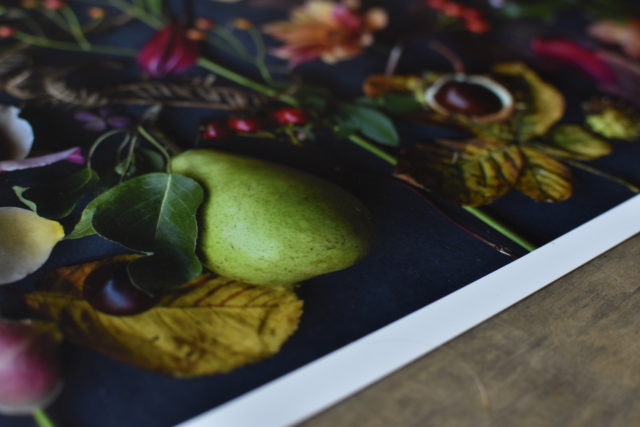 In my first year I’d seen all the astonishing varieties that you and other amazing flower growers had. I read everything about these plants & set about growing pretty much all of them. Those that flowered were stunning and had me hooked, but the rabbits, pheasants, weeds, and endless other unpredicted occurrences made for a year of overwhelm, and there were more unplanted seedlings than I care to remember! So my advice is always to get the basics set up and grow modest quantities of a selection of varieties that really blow your mind; flowers that you love so much you’ll be hooked enough to try again the next year.
In my first year I’d seen all the astonishing varieties that you and other amazing flower growers had. I read everything about these plants & set about growing pretty much all of them. Those that flowered were stunning and had me hooked, but the rabbits, pheasants, weeds, and endless other unpredicted occurrences made for a year of overwhelm, and there were more unplanted seedlings than I care to remember! So my advice is always to get the basics set up and grow modest quantities of a selection of varieties that really blow your mind; flowers that you love so much you’ll be hooked enough to try again the next year.
For those who are new to gardening altogether I’d recommend sowing some annuals, perhaps something like sweet peas, cosmos and malope just to see how much flower power a few packets of seeds and a few months of warm weather can give you.
Erin: Great advice! Your new botanical print cards are absolutely stunning. Can you share more about the process of creating these works of art? And I’d also love to learn more about the charitable cause that you support through the sales of the cards.
Becky: Thank you so much, I’ve loved making the cards and prints and I really have been blown away by how well they’ve been received. Photographing flowers from the garden started as a way of documenting the seasons and soon became a creative outlet for me too – aptly described by Sarah Statham of Simply by Arrangement as a kind of ‘visual yoga’. The technical side of setting up the cards and prints is a less creative process but the effort has been hugely rewarding. I can’t tell how exciting it has been to send my work off to places such as New Zealand, Lithuania, America, Norway…or even just down the road for that matter!
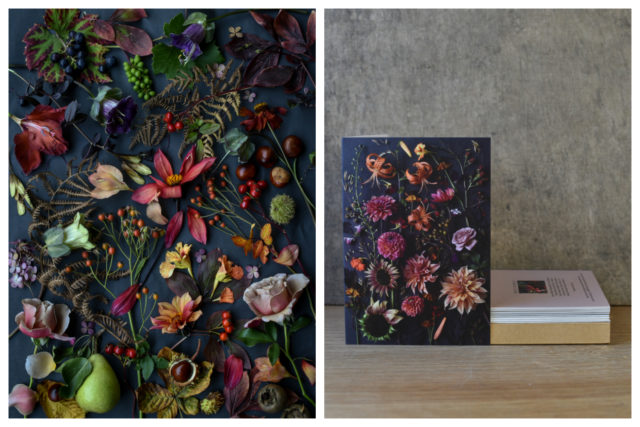 It’s also provided a perfect opportunity to raise money for ASSIST, a charity I’ve been volunteering with for a couple of years. ASSIST support destitute asylum seekers in Sheffield, where I live. The term ‘destitute’ very specifically refers to asylum seekers who have absolutely no government support and for whom it is actually illegal to work. These people are extremely vulnerable as they’ve got no legal way of supporting themselves. They’re not allowed to stay yet there’s nowhere safe to go and often they’re entirely alone. The night shelter where I volunteer opens at 9:45 pm and closes at 8 am the next morning. It provides the basic service of a roof to sleep under, a mattress with bedding and a kitchen where guests can have something to eat and drink. So, at the very least 10% of any profits made from my sales will go towards the much needed upkeep of the night shelter.
It’s also provided a perfect opportunity to raise money for ASSIST, a charity I’ve been volunteering with for a couple of years. ASSIST support destitute asylum seekers in Sheffield, where I live. The term ‘destitute’ very specifically refers to asylum seekers who have absolutely no government support and for whom it is actually illegal to work. These people are extremely vulnerable as they’ve got no legal way of supporting themselves. They’re not allowed to stay yet there’s nowhere safe to go and often they’re entirely alone. The night shelter where I volunteer opens at 9:45 pm and closes at 8 am the next morning. It provides the basic service of a roof to sleep under, a mattress with bedding and a kitchen where guests can have something to eat and drink. So, at the very least 10% of any profits made from my sales will go towards the much needed upkeep of the night shelter.
Erin: I’m really inspired by this, Becky. Thank you for your volunteer service and for sharing your fascinating story with me. I’ve enjoyed this conversation tremendously. I would love to come visit you and tour the Chatsworth gardens some day soon.
I’m delighted to give away a print and two sets of Becky’s gorgeous cards to three lucky Floret readers. For a chance to win, simply post a comment below by March 10th. In it, please share your favorite botanical garden, or the flower you’re most excited to see this spring!
UPDATE: The giveaway is now closed. Congratulations to our winners: Kirsten Young, Susan Fahy and Amy Reinhart.
Please note: If your comment doesn’t show up right away, please sit tight; we have a spam filter that requires we approve comments before they are published.
Find Becky Crowley online at: beckycrowley.com
Etsy: Becky Crowley Prints
Instagram: @beckycrowley_

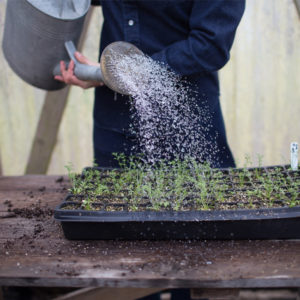

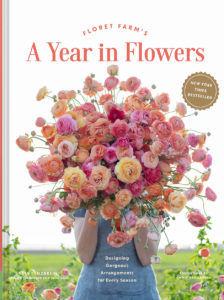
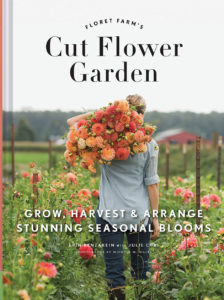


Kayleigh on
What a fantastic cause – I’m most excited for poppies!